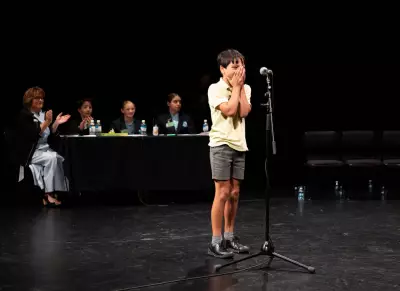
When a family faces eviction, the upheaval extends far beyond losing a roof over their heads, creating severe disruptions to their children's education. A recent investigation by The Associated Press, following one mother's arduous journey, exposes the profound academic consequences and the safety nets that often fail to catch those in need.
The Fight to Stay in School
The story of Sechita McNair, an Atlanta mother and out-of-work film industry veteran, illustrates this crisis. After being evicted, she embarked on a year-long quest for new housing, driving extra hours for Uber and borrowing money. Her determination was fuelled by a single goal: to secure a home in the right neighbourhood so her eldest son could remain at his high school.
She eventually found a lease in the rapidly gentrifying Old Fourth Ward. At $2,200 a month, it was the only "semi-affordable" apartment that would rent to a single mother with a recent eviction on her record. Despite this victory, her son's academic life remained in peril, leading her to briefly consider homeschooling before re-enrolling him.
Systemic Challenges and Missed Support
Federal law, namely the McKinney-Vento Act, includes provisions designed to help homeless and evicted children remain in their original schools to provide stability. These rights include free transportation to and from school. However, a critical gap exists between policy and practice.
McNair's children were legally allowed to keep attending their Atlanta schools even after moving to a suburban county 40 minutes away. Astonishingly, the district did not inform her about the free transportation benefit until the school year had already ended. This left her responsible for the arduous commute throughout the academic year.
The financial disparity between school districts further compounds the problem. The family moved from Atlanta, which spends nearly $20,000 per student annually, to a suburban district that spends $7,000 less per pupil. This significant funding difference translates into larger class sizes and fewer critical support staff like psychologists and guidance counsellors.
The Human Cost of Instability
For McNair's 15-year-old son, Elias, the instability was crippling. He was already grappling with the trauma of his father's death in 2023, which occurred on the sidelines of his basketball practice. The subsequent eviction and housing displacement took a further toll.
Elias failed two classes during his freshman year. When he began skipping school again this autumn, McNair took drastic action, filing papers to homeschool him. This solution proved unworkable, as Elias would not complete schoolwork unsupervised, and the homeschooling group's logistics were untenable for a working single mother.
McNair's nightly Uber shifts to pay the bills meant she could not be home to monitor her son. “I should be home making sure Elias gets to bed on time,” she confessed, crying. “But I have to work. I’m the only one paying the bills.” Her story underscores that beyond the legal right to remain in a school, the consistency of routine and parental support are irreplaceable pillars of a child's academic success.
Now, with Elias back in his original Atlanta school, McNair can focus on her work delivering food through Uber Eats without the fear of truancy officers. Her reflection captures the exhausting reality for many parents in her situation: “I was running around doing so many other things just so we have a place to live... that I didn’t put enough of my energy there.”





